A restaurant runs based on its storage’s bounty. Without the ample number of supplies needed to sustain a day’s worth of operation, a food place can never function. This is also applicable to every household. Food inventory is critical in ensuring that homes and food businesses have enough stock inventory to go on about their day. It also helps them in their budget allocation and sales computation.
Master Food Inventory Template
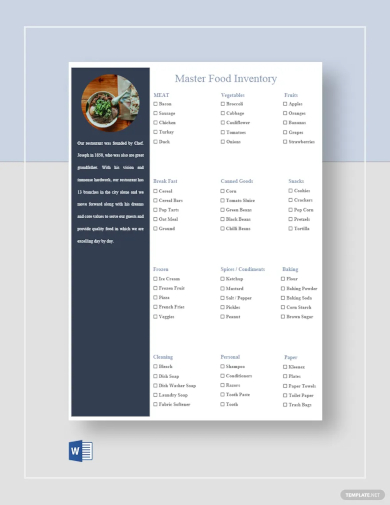
Restaurant Food Inventory Template
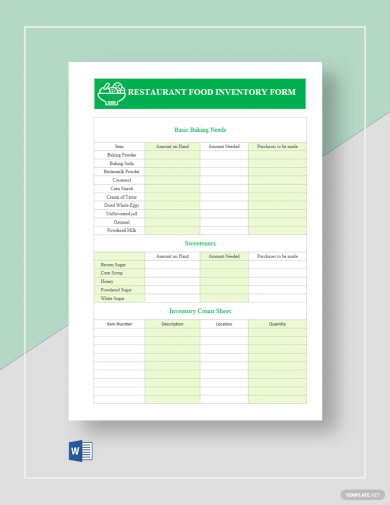
Food Inventory Sheet Template
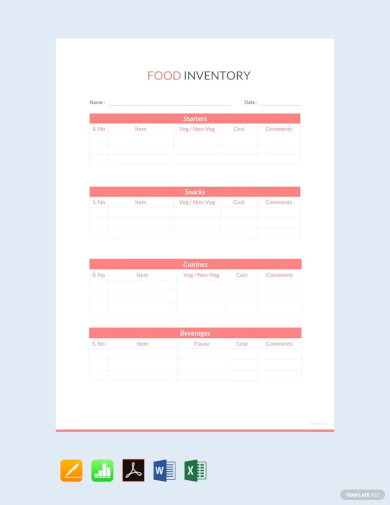
Food & Beverage Inventory Template
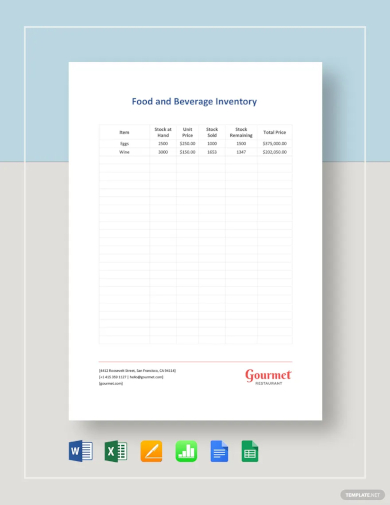
Food Inventory Spreadsheet Template
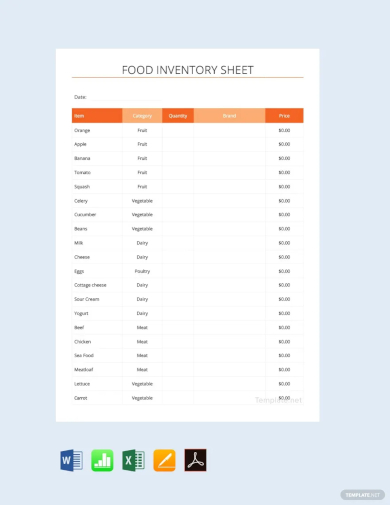
Editable Inventory Checklist Template
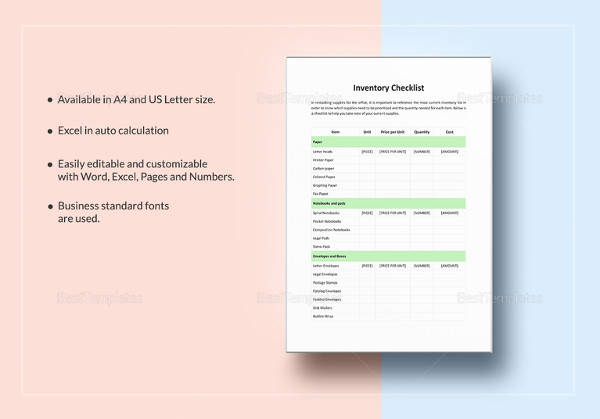
Printable Inventory Spreadsheet Template
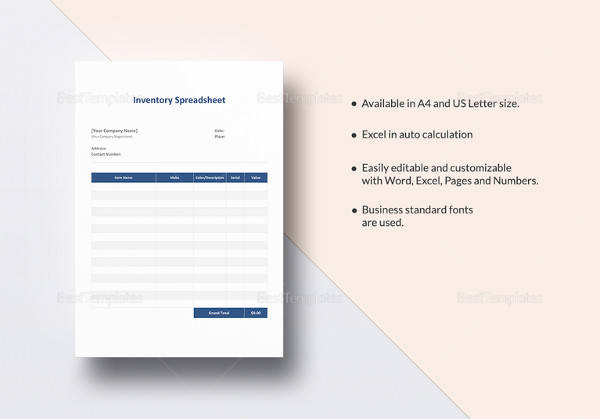
Food Storage Inventory Sheet Template
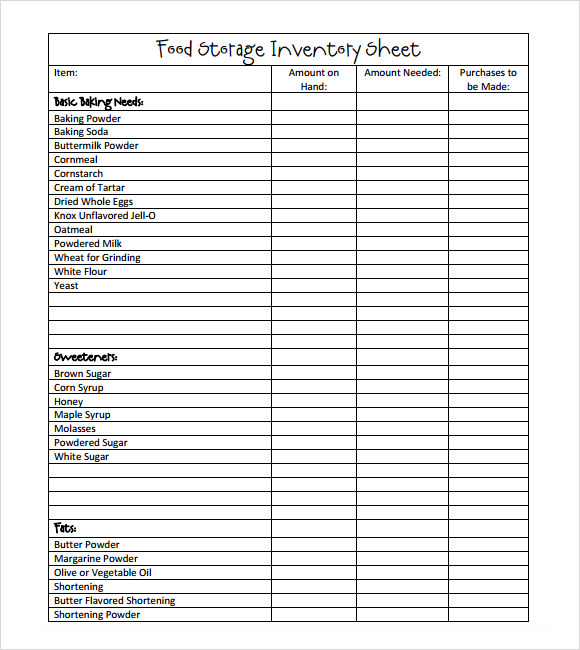
paladins-hideout.com
Food Freezer Inventory Template
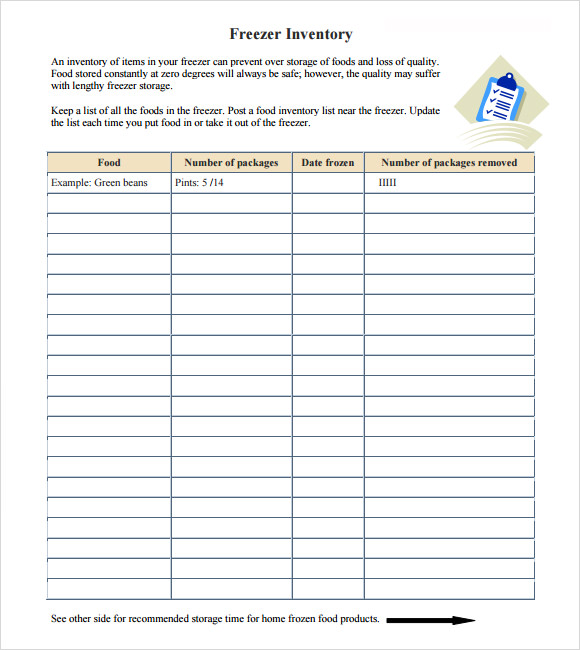
extension.umn.edu
Food Inventory Excel Template
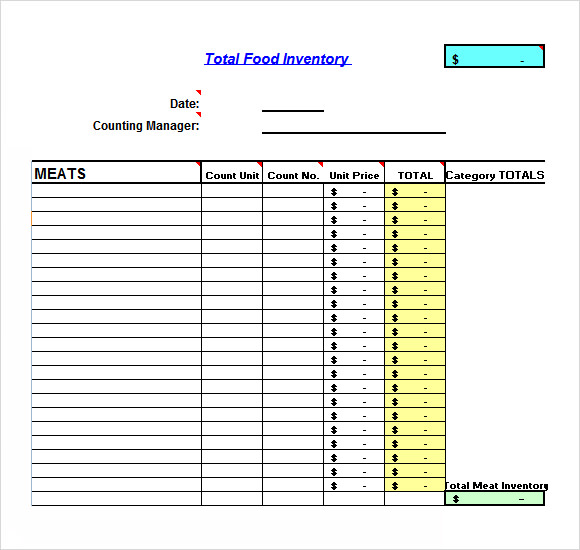
chefzone.com
Sample Food Inventory Template
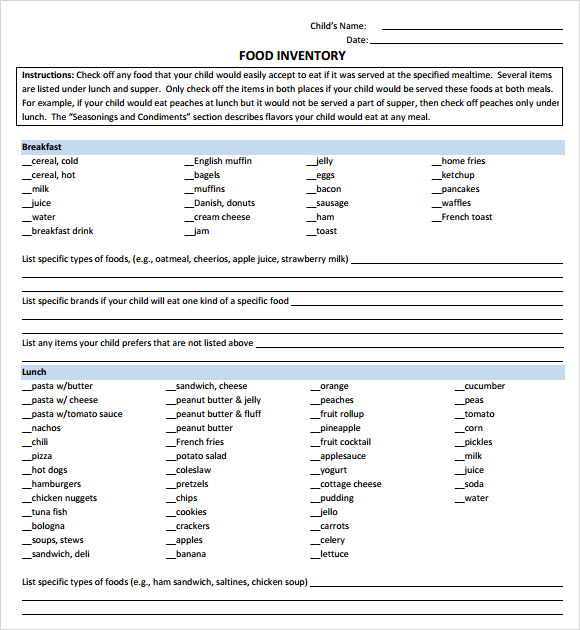
cintiotinstitute.com
Physical Inventory of Food Template
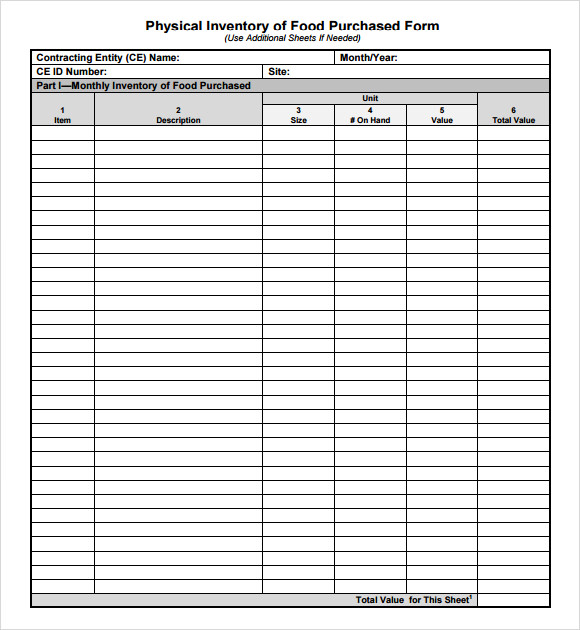
squaremeals.org
Inventory Form Restaurant Template
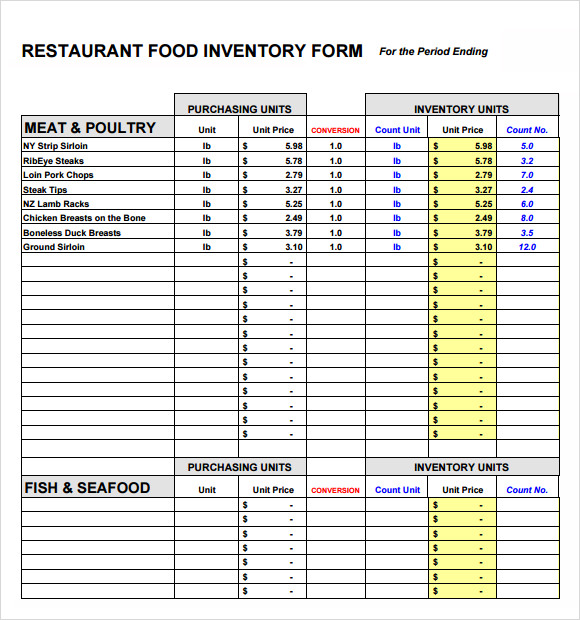
foodsoftware.com
Food Inventory Outline Template
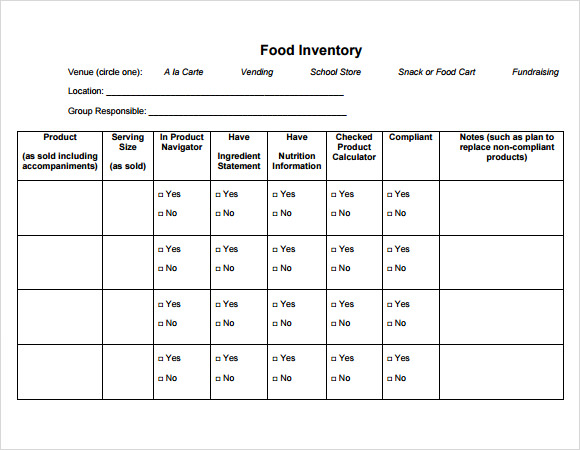
healthiergeneration.org
What Is a Food Inventory?
Food inventory is the act of managing what items come to your food stock, what is taken, and what’s left in your storage. It contains important records when maintaining your food and beverages availability and the needed number of stocks for purchase. This is especially useful in food establishments such as fast foods and restaurants as inventory management plays a significant role in their daily operation. It helps them identify which menu options are in demand and which are those that are not. The information from these details helps them allocate their business budget appropriately.
Tips on How to Efficiently Do a Food Inventory
Here are some important steps to remember when doing an inventory:
Step 1: Categorize Your Storage
The key to an efficient inventory management system is to have, first and foremost, an organized storage unit. It’s not easy to go over each stock item when they’re all over your walk-in freezer or pantry. The risk of miscalculating or losing something increases when they’re not on display properly. Before you do any computation, categorize all items first. Your food inventory list can classify your pantry into meats, dry goods, spices, produce, dairy, and beverages, among others. For convenient identification, you can place labels. This way, when you need to check on a specific group for your inventory sheet, you’ll know where to locate them instead of rummaging through all the stocks.
Step 2: Track Your Stock Usage
Monitoring your stock usage allows you to determine how much you’re consuming daily, how much food goes to waste, and how much you’re going to spend to replenish the supplies. These are important to ensure that you have enough left on your inventory to continue serving your customers. Often, restaurants and fast-food chains determine the estimate of their daily servings per recipe to help them count their consumption. Log what comes out of the pantry or the freezer in real-time for accuracy on your food inventory tracking sheet. It’s also important to follow the First In, First Out system.
Step 3: Monitor What Comes In
Besides supervising your consumption, it’s also important to pay attention to stock deliveries or what’s added to your kitchen supply. This avoids the risk of buying more than what you need knowing that you have incoming stocks. When you order groceries and other food items, be sure to note the quantity, quality, date ordered, and date of arrival on a monthly or weekly inventory sheet, depending on your order sample schedule. For the perishables, note their expiry dates to avoid consuming spoiled items.
Step 4: Assign a Team
When it comes to managing your home or business inventory, consistency matters most. It’s important to assign someone familiar with all the items, records, and delivery schedules to minimize the risk of inventory-related mishaps. Having the same team do the inventory helps ensure that everything runs smoothly as they’re already knowledgeable of the entire process, stock arrangement, and resolving issues. Instead of asking just anyone in the organization to check on the supplies, dedicate a specific number of individuals to fulfill the task daily.
FAQs
What are the different types of inventory?
The different types of inventory are:
- Raw material inventory
- Cycle inventory
- Unfinished product inventory
- In-transit inventory
What are the different inventory costing methods?
The different inventory costing methods include weighted average, specific identification, last-in-first-out, and first-in-first-out.
What’s the formula for calculating the cost of inventory?
According to Bizfluent, this the formula for calculating the inventory cost:
Inventory Cost = (Beginning Inventory + Inventory Purchase) – Ending Inventory
Food inventory is more than just a task list of keeping your refrigerator full, monitoring your kitchen supply, and making sure that you don’t run out of anything you need. It contributes significantly to making your business work for the best. Check out our food inventory templates for your use. Download now!
Related Posts
Weekly Schedule Samples & Templates
Contractual Agreement Samples & Templates
FREE 9+ Amazing Sample Church Bulletin Templates in PSD | PDF
Sample Business Card Templates
Sample Cashier Job Descriptions
Questionnaire Samples
FREE 10+ Sample HR Resource Templates in PDF
FREE 10+ HR Consulting Business Plan Samples in MS Word | Google Docs | Pages | PDF
FREE 49+ Sample Job Descriptions in PDF | MS Word
FREE 16+ Nonprofit Budget Samples in PDF | MS Word | Excel | Google Docs | Google Sheets | Numbers | Pages
FREE 13+ Academic Calendar Templates in Google Docs | MS Word | Pages | PDF
FREE 10+ How to Create an Executive Summary Samples in Google Docs | MS Word | Pages | PDF
FREE 23+ Sample Event Calendar Templates in PDF | MS Word | Google Docs | Apple Pages
Company Profile Samples
FREE 10+ Leadership Report Samples [ Development, Training, Camp ]
